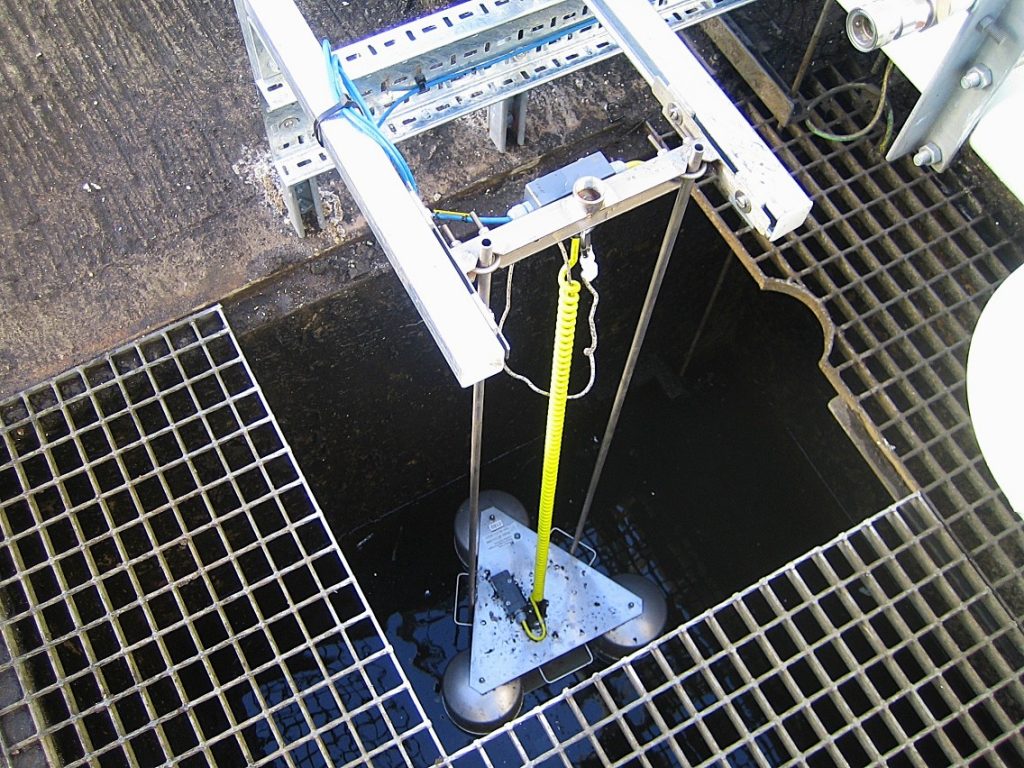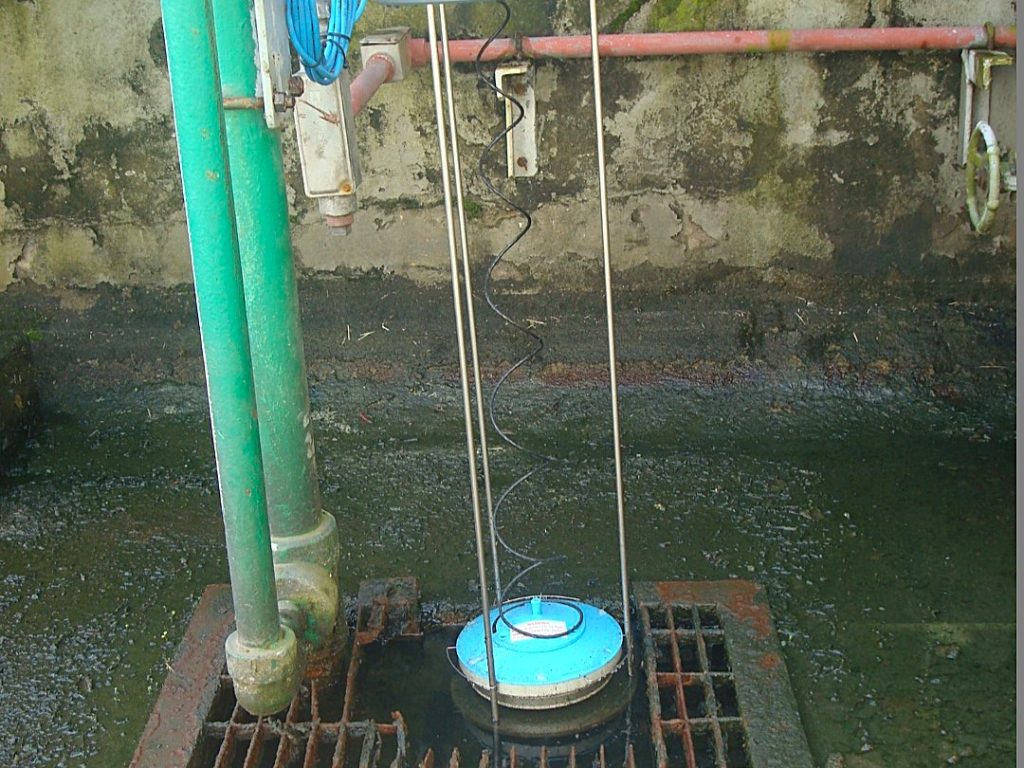Home » Applications » Floating Roof Oil Storage
Storm water accumulated on a concave floating roof of an oil storage tank may affect its floatation, making it necessary to immediately drain the water. This is usually done through a flexible pipe, running from the floating roof down inside the tank, with an outlet above the ground near tank’s bottom.
The following problems may occur in the operation of a floating roof drainage system:
A Leakwise ID-223 Oil Sheen Detector should be installed in a settling tank (or in a sump or a separator) collecting the water drained from the roof. The settling tank will settle the liquid flowing in from the roof to allow oil separation and detection by the ID-223 sensor. Normal indication of the Leakwise Controller should be water on rainy days, or air during the dry season. An alarm will be triggered if the ID-223 sensor detects oil or oil on water, indicating that oil is seeping through
a fracture in the roof drainage pipe.
If air instead of water status is indicated during a rainy day, it means that the flexible roof drainage pipe is bent or clogged, and no water is running through it. This is an early alert that the roof will become too heavy and sink in the tank.
The ID-223 Detection System can be used to control valves, pumps, and sump gates, thus stormwater from the tank’s roof can be discharged directly to the sea, river, or public drainage system. Only the oily water will be diverted to treatment. This reduces the load on the local treatment system and brings substantial cost savings.

